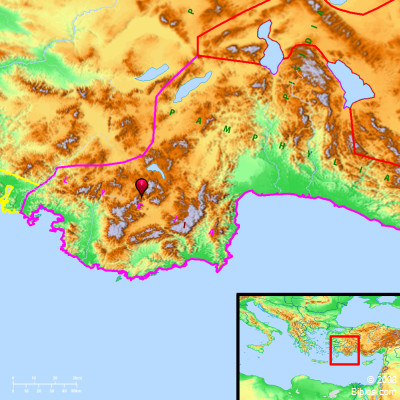Atlas  Lycia and surrounding region Maps Created using Biblemapper 3.0 Additional data from OpenBible.info Occurrences Acts 27:5 When we had sailed across the sea which is off Cilicia and Pamphylia, we came to Myra, a city of Lycia.Encyclopedia LYCIAlish'-i-a (Lukia): An ancient country forming the southeast portion of Asia Minor. The surface of Lycia is exceedingly rugged, and its lofty mountains rise almost directly from the sea. Over them several trade routes or passes lead from the coast to the interior. Down the mountain sides rush many small rivers, of which the Xanthus is the chief. The history of Lycia, like that of the neighboring countries, forms a part of the history of Asia Minor. Successively it was in the possession of the Persians, of Alexander the Great, of the Seleucid kings and of the Ptolemies. In 188 B.C. it fell into the hands of the Romans, who gave it to the island of Rhodes; 20 years later, because of its loyalty to Rome, it became free and independent (1 Maccabees 15:23). In 53 A.D., during the reign of the emperor Claudius, it became a Roman province, and in 74 A.D. it was united with Pamphylia to form a double province over which a Roman governor presided. LY'CIA, a district in Asia Minor, next w. of Pamphylia and on the Mediterranean. Map No. 7. Strong's Greek G3073: LukiaLycia, a region of Asia Minor |



